Scientist of the Day - Johannes Hevelius
Johannes Hevelius, a Polish astronomer, was born Jan. 28, 1611. Hevelius built an observatory in Gdansk where, later in life, he distinguished himself as an observer and cataloguer of stars. He even introduced 7 new constellations into the celestial community, such as Lacerta the Lizard, and Vulpecula the Fox, constellations that we still accept and use. He published a widely used catalog of stars and a beautiful celestial atlas. We discussed and showed images from Hevelius' star atlas, with its new constellations, on this date five years ago, when Hevelius was first featured as a Scientist of the Day.
But long before Hevelius began tracking the stars, he made his mark as an observer and mapper of the Moon. His Selenographia was published in 1647, 43 years before the star atlas (second image). A tall, thick quarto, printed in a large, rich font and filled with lovely engravings, many executed by Hevelius himself, it has to be the most elegant book on the Moon ever printed. We celebrate that achievement today.
Hevelius began by making drawings of the appearance of the Moon for every single day of the lunar cycle. He engraved these with his own burin and included them in the book, each one carefully dated. We see here the slightly-past-third-quarter Moon, as it appeared on Nov. 4, 1643 (third image).
Hevelius then took these individual drawings and combined their details into three double-page lunar maps. One of these shows the Moon when full. We do not reproduce it here, because a full moon is the least interesting of all moons, with no shadows to show relief. A second map, very clever in its conception, shows the Moon as if each crater were illuminated by a mid-morning Sun (fourth image). This is a Moon you can never see in the sky, with each crater bathed in the same defining shadow. We reproduce both the entire map, and a detail from left-center, where a crater that will soon be named Copernicus dominates the landscape (fifth image).
The third of the three great lunar maps in the Selenographia is a nomenclature map (sixth image). The first map with lunar names had been published just two years earlier, by a Flemish cartographer, who followed Galileo in naming lunar craters and maria after patrons or potential patrons. This map, by Michael van Langren, was printed as a broadside, did not circulate widely, and never acquired a following. Hevelius chose to name the features of his Moon after features of the Earth that they resembled, reasoning that this would spare us from having to come up with and remember an entirely new lexicon of geographical (or selenographical) terms.
He thought the large dark region at the left resembled the Mediterranean Sea, and named it that: Mare mediterranea (seventh image). In our Mediterranean there is a large island, Siciliy, with a volcano at its center, and so the large crater in the lunar Mediterranean was named Sicilia and its central mountain Mt. Etna. So it went with the entire Moon.
Hevelius’s lunar nomenclature would attract a number of adherents in the ensuring century, but it ultimately faded under the onslaught of a competing system, offered up by the Jesuit astronomer in 1651, in which craters are named after historical astronomers and natural philosophers, and the dark areas (seas) after moods and meteorological phenomena. Thus we have the crater Copenicus and the Sea of Tranquility, rather than Sicilia and Pontus Euxinus (the Black Sea).
Although the Seleographia is primarily concerned with the Moon, an introductory chapter discusses cosmology, with diagrams of the three then-competing world systems. There is also an engraving that presents the telescopic faces of Mars, Jupiter (with its recently discovered 4 satellites), and Saturn (eighth image). We see that Hevelius was no closer to solving the enigma of Saturn’s changing appearances than anyone else. That problem would not be solved for another decade, when in 1659 would finally propose the existence of a Saturnian ring. Hevelius even included an engraving of himself at the eyepiece of one of his small telescopes (ninth image). If he seems to be wearing a nightdress, remember that observational astronomy is a night-time activity.
Finally, we note that Hevelius began his book with not only an , but a frontispiece portrait, showing him as a handsome 35-year-old well-to-do Gdansk citizen (first image). There was nothing unusual about that. But forty years later, Hevelius printed another portrait, as a frontispiece for his star catalog, and in this one he looks, well, forty years older. Very few people wealthy enough to commission portraits allowed their images to age along with the clock. You can see the portrait of the older Hevelius in our , or you can go directly to our .
Dr. William B. Ashworth, Jr., Consultant for the History of Science, Linda Hall Library and Associate Professor emeritus, Department of History, University of Missouri-Kansas City. Comments or corrections are welcome; please direct to ashworthw@umkc.edu.


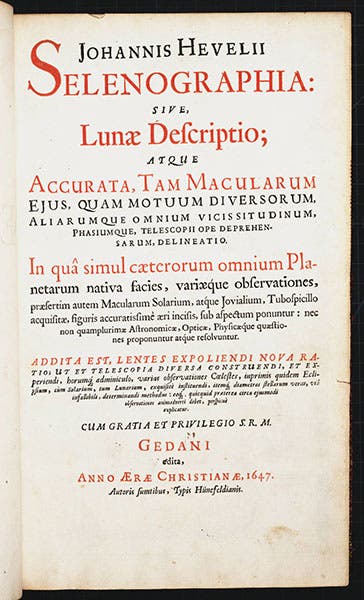
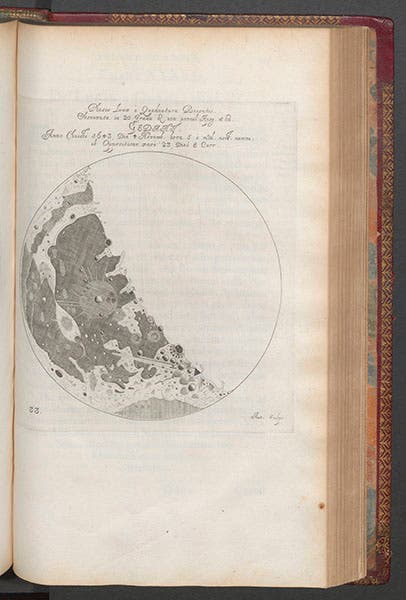


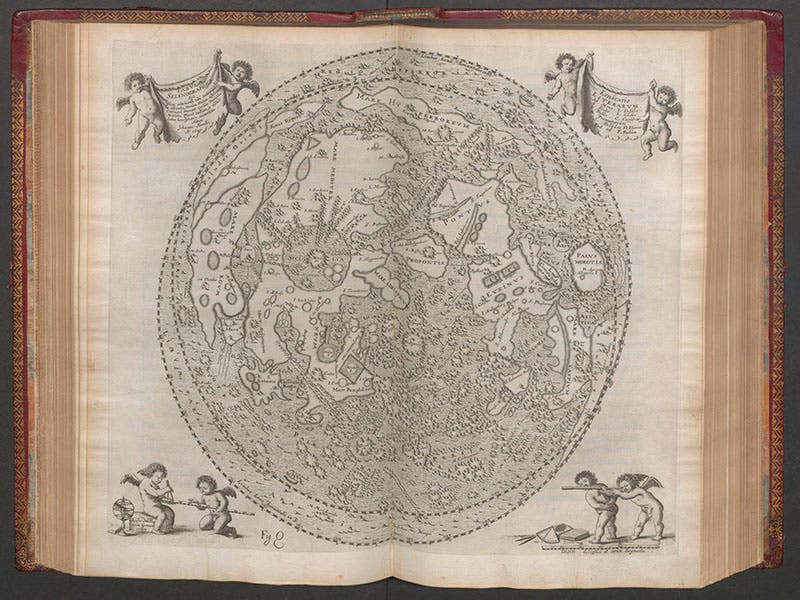
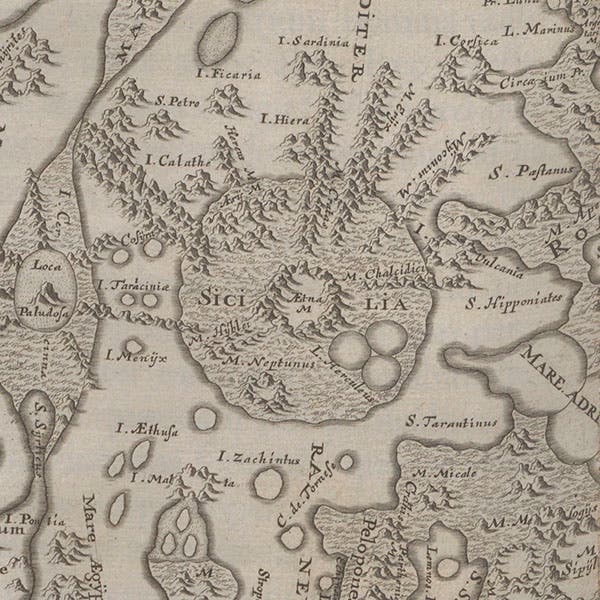
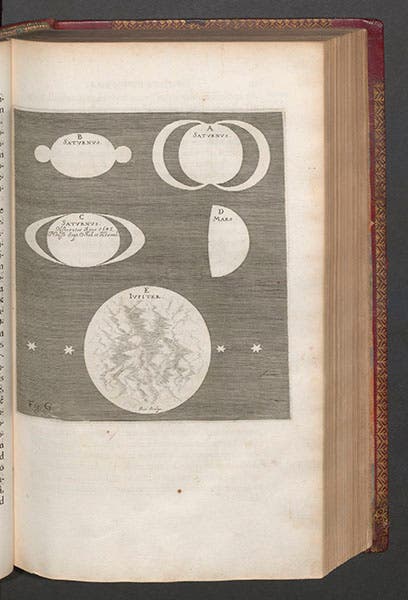
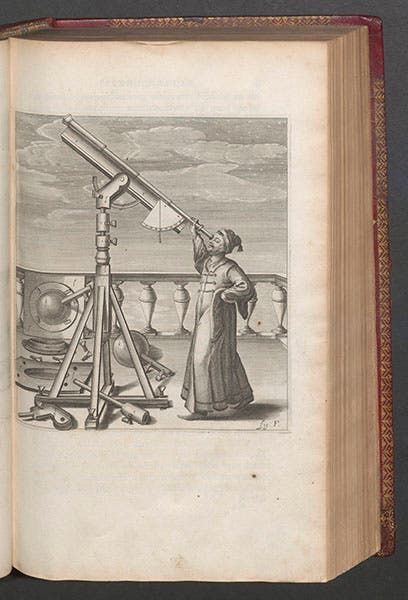
![“Aurora Borealis,” hand-colored wood engraving by Josiah Wood Whymper, [Natural Phenomena], plate 2, 1846 (Linda Hall Library)](https://assets-us-01.kc-usercontent.com:443/9dd25524-761a-000d-d79f-86a5086d4774/0245ffcb-b70c-477c-8792-0a73ebd54eb2/Whymper%2011.jpg?w=210&h=210&auto=format&fit=crop)



